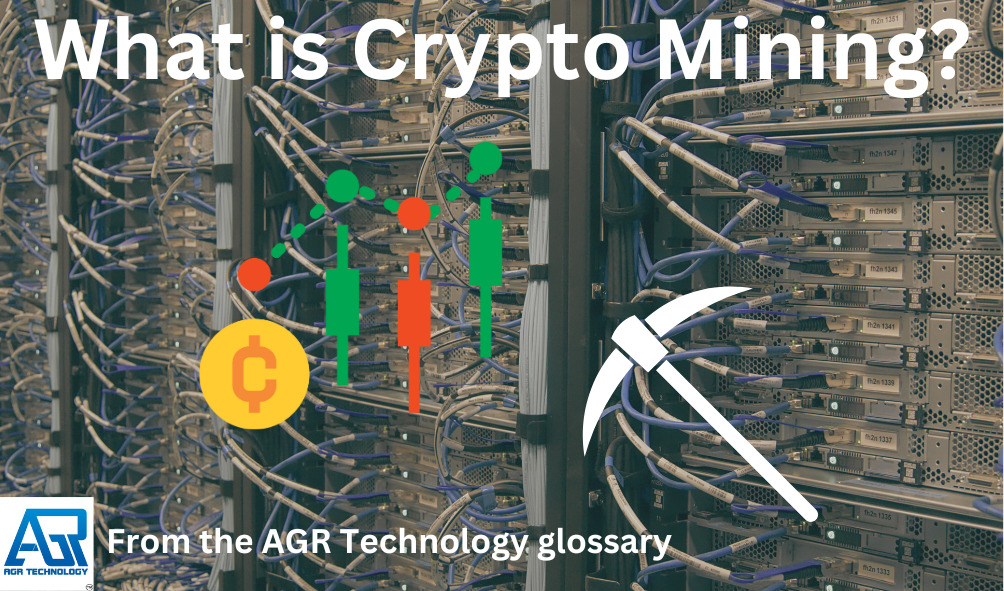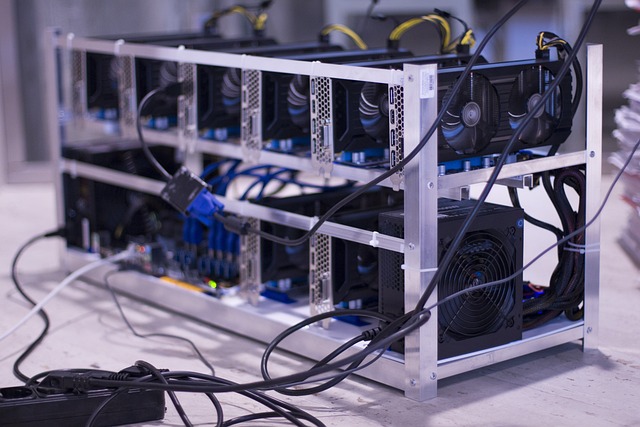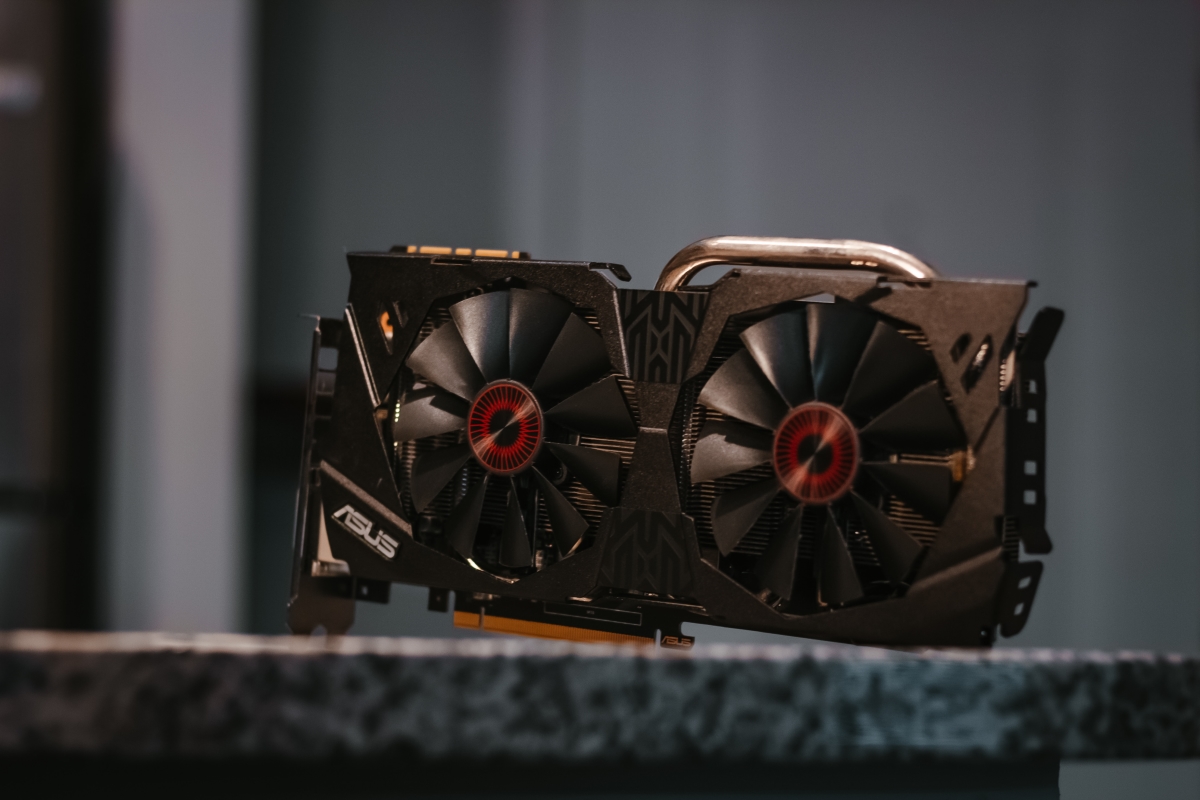Introduction

Mining is the process of validating transactions on a Blockchain in exchange for fresh Bitcoin. This reward reduces transaction fees by providing a secondary incentive to contribute to the network’s processing capacity. The introduction of specialized processors such as FPGAs and ASICs running complex hashing algorithms has enhanced the rate of creating hashes, which validate any transaction.
Since the introduction of Bitcoin in 2009 and the subsequent explosion in Cryptocurrencies, there has been an arms race for cheaper yet more efficient devices. The hash rate of mining is commonly measured in TH/s.
As more people enter the virtual currency realm, producing hashes for validation has become more complicated, pushing miners to invest increasingly significant sums of money to enhance processing performance. Mining is popular in areas with cheap electricity, a cold temperature, and governments with clear legislation and legal frameworks.
As a result of the widespread use of cryptocurrency mining and the growth of blockchain transactions, many things have changed. Exchanges allow users to acquire additional cryptocurrencies (altcoins) alongside the traditional Bitcoin currency. With the rise of exchange platforms currencies like Ethereum (ETH), which are created via proof-of-stake techniques, as well as traditionally mined coins like Bitcoin can be bought and sold. People can now obtain a wide variety of cryptocurrencies and efficiently participate in the mining environment through simple platforms.
We have published other resources around Crypto including a compilation of recommended exchanges in markets such as Norway, Dubai, leading Hong Kong Crypto exchanges , leading Singapore platforms as well as the best Crypto exchanges in NZ, Top Crypto trading apps in Taiwan & best Crypto apps in Australia.
Some miners pool their resources, distributing their processing power across a network in order to split the reward equally based on the amount of labor they contributed to the chance of finding a block. A “share” is then given to mining pool members who produce valid partial proof of work. As of February 2018, the Chinese government halted virtual currency trade, prohibited initial coin offerings, and shut off mining.
Video of a Crypto mining operation from China a few years ago:
Why Bitcoin Needs Miners

Proof of work which we will talk about more below is central to the underlying design of Bitcoin (the first Cryptocurrency).
Mining eliminates the risk of copying, counterfeiting, or double-spending digital currency by making efforts to hack the network expensive and resource-intensive. Joining the network as a miner is less expensive than undermining it.
Miners act as auditors ensuring transactions are valid and there isn’t any “double spending” on the network which keeps the system honest and transparent and is essential for Bitcoin to run smoothly.
Crypto mining malware

Due to the rise in popularity and commercial opportunities presented by Cryptocurrency and blockchain technologies cyber criminals have also become interested in this sector and are on the lookout for ways to exploit people to profit themselves.
Cybercriminals use a number of methods such as fake crypto platform Phishing messages to steal people’s login information or using what is known as “crypto-jacking”
Cryptojacking is when an attacker uses a victim’s computer that has been infected by malware such as a Trojan horse to secretly mine cryptocurrencies in the background earning money from the attacker using the computing resources of their victim.
Back in 2019 a large-scale malware effort – dubbed the “Nansh0u campaign” used sophisticated methods to compromise approximately 50,000 servers worldwide to secretly mine cryptocurrencies.
Price increases in GPUs as a result of mining

Because of increased Bitcoin mining, demand for graphics cards (GPUs) surged dramatically in 2017. Popular graphics cards from Nvidia, such as the GTX 1060 and GTX 1070, as well as AMD’s RX 570 and RX 580 GPUs, doubled or quadrupled in price or were out of stock.
Miners routinely purchase the whole quantity of new GPUs as soon as they become available. Nvidia has requested that GPUs be sold to gamers rather than miners, and mining accelerator chips have been produced. In 2017, Intel launched Blockscale, its own brand of crypto accelerator chip.
Proof of work
A sort of cryptographic evidence known as proof of work (PoW) involves one party (the prover) demonstrating to another (the verifiers) that a certain amount of computational effort has been applied. In 1993, Moni Naor and Cynthia Dwork developed the idea as a means of preventing dos attacks and other service abuses.
It was later made popular by Bitcoin as the basis for consensus in a permissionless decentralized network where miners compete to add blocks and create new money, with each miner’s chance of success varying according to the amount of computational work they put in.
The two most well-known Sybil deterrent mechanisms are PoW and PoS (proof of stake). The task must be fairly difficult (yet possible) on the prover or requester side yet simple to check for the verifier or service provider. This asymmetry is a critical characteristic of proof-of-work methods.
The goal of proof-of-work algorithms is not to demonstrate that a task was completed or that a computational issue was “solved,” but rather to prevent data modification by nodes.
Pros
Security:
Proof of work (PoW) is often regarded as a very secure consensus procedure. To validate transactions and add them to the blockchain, miners must conduct sophisticated mathematical computations. As a result, attackers will find it more difficult to manipulate the blockchain network.
This ensures all nodes in the network are contributing to its collective operation which is harder to game as hardware resources are required to participate.
True decentralization:
With the proof of work model, true decentralization is promoted and anyone with computing power and an internet connection around the world can get involved and contribute to the network without having to own any cryptocurrency or buy into the network.
Equal distribution:
The approach works by fairly distributing freshly created coins to miners who contribute to the network by validating transactions. This contributes to the cryptocurrency’s fair and decentralized distribution to all nodes on the network.
Cons
Environmental impact:
Proof of work requires lots of collective processing power and is made up of hundreds of servers in data centers that consume lots of electricity making it quite impactful. There are however data centers making use of more renewable energy like solar and wind to help power their infrastructure and as renewable technologies keep getting better and costs go down this is likely to keep growing.
Indirect potential for centralized power to build up:
While PoW was created to encourage decentralization, it has also resulted in the concentration of mining power in the hands of a few major mining pools. This could lead to network centralization and increase the risk of a 51% assault. A 51% attack is when enough nodes on a network are controlled by a single entity or group which gives them enough power to influence the whole network.
Reduced transaction speeds:
Due to the processing and varying degrees of computing resources proof of work methods take a long time to validate transactions and add them to the blockchain. When compared to other consensus processes, such as proof of stake, this can result in slower transaction speeds.
Proof of stake
Proof-of-stake (PoS) protocols are a type of blockchain consensus mechanism that works by selecting validators in proportion to their holdings of the associated cryptocurrency. Peercoin was the first to employ PoS for cryptocurrency in 2012, however, the method still resembled a POW.
To be recognized, a blockchain transaction must be added to the blockchain, and validators are rewarded for doing so. PoS achieves this by requiring validators to hold a certain number of blockchain tokens, necessitating potential attackers to get a huge proportion of the tokens on the blockchain in order to mount an attack.
PoW, another widely used consensus mechanism, verifies transactions by requiring a possible attacker to acquire a significant portion of the validator network’s processing capacity.
According to Bashir, there are three further varieties of PoS: committee-based PoS, delegated proof of stake (DPoS), and liquid proof of stake (LPoS). PoS schemes’ additional vulnerabilities are directly tied to their advantage, a comparatively low amount of calculations to perform.
Pros
Energy efficiency:
PoS consumes less energy than PoW since it does not require as much computer power to generate new blocks. This makes it more ecologically friendly and less expensive to run.
Transaction speed:
Because fresh blocks may be constructed more quickly, PoS provides for quicker transaction confirmation times.
Cons
Less security and integrity checks to safeguard the network:
PoS is less secure than PoW because it assumes that the majority of stakeholders would act in the network’s best interests. A large enough group of stakeholders working together could potentially jeopardize the security and overall integrity of the blockchain.
Potential for centralization and concentration of power:
PoS also has the potential for centralization, as it favors those with the most cryptocurrency. This could result in a small group of wealthy individuals wielding disproportionate power over the network due to them owning more cryptocurrency assets.
All in all both consensus methods aren’t perfect but each has its strengths and weaknesses that make them suitable for different projects and their unique requirements.
Can you mine cryptocurrencies on your smartphone?
While it is technically possible to do this it is very impractical as mining requires significant processing power to be viable.
For operations to turn a profit they must invest in specialized hardware and powerful graphics cards. In most cases a computer isn’t powerful enough anymore as mining has become more competitive and requires more resources to do well.
Conclusion
If you found this content useful, please share it with others and keep in touch with AGR Technology via our social media networks to receive further updates. we encourage you to explore our business offerings along with our software utilities and blog for more crypto-related content.
Related pages from our website:
Best Australian Crypto exchanges
DAO (Decentralized Autonomous Organization)
Central Bank Digital Currencies – Pros and cons
Cryptocurrency Forks – What are they?
Summary of different companies, people and technologies in Crypto
Distributed Ledger Technology Definition
Web 3.0 – Definition & Concept
Fintech (Financial technology)
How to buy Bitcoin in Australia for beginners
What are some of the best Cryptocurrencies to buy? (Live updated data)
Some of the best small business loans in Australia
Cryptocurrency Market Analysis Definition
How can you accept Cryptocurrency payments on your website?
Blockchain Explorer Definition
What are Initial Exchange Offerings (IEOs)
List of some of the best CFD trading programs for Dubai users
Crypto Mining Profitability Calculator
Crypto Mining Conversion Calculator
Net worth calculator – online tool
Mortgage affordability calculator – online tool
Curated summary of the best CFD brokers/apps in Australia
Leading Cryptocurrency exchanges for Indian users
Top-rated Crypto exchanges for South Africa
Some of the best Cryptocurrency exchanges & apps for Saudi Arabia
Some of the best small business loan providers for Perth
Top Alternatives to Swyftx for Australian Crypto users
Top CMC Markets Alternatives in Australia
Coinspot alternatives for Australian Crypto traders
Crypto wallet recovery services by AGR Technology
Web3 Marketing Services & Solutions For Brands
Curated summary of some of the best loan providers for Melbourne businesses
List of some of the best day trading applications for Australians
Top Forex trading platforms & brokers for Canadians
Top Etoro alternatives for Australian forex traders
What to look for when choosing a neobank app
Some of the best forex trading apps for New Zealand
Top-rated Alternatives to Etoro for Australian CFD traders
Top Sydney business loan financing platforms
Some of the best Cryptocurrency exchanges/apps for Canadians
Bibliography/citation(s):
(2012). Cryptocurrency [Online]. Wikipedia. Available at: https://en.wikipedia.org/wiki/Cryptocurrency (Accessed: 20 April 2023).
Proof of work, Wikipedia (Mar. 2, 2005), https://en.wikipedia.org/wiki/Proof_of_work.
“Crypto mining.” Australian Taxation Office. Accessed April 20, 2023. https://www.ato.gov.au/Business/Income-and-deductions-for-business/Crypto-assets-and-business/Crypto-mining/.
(2013, November 20). Proof of stake. Wikipedia. https://en.wikipedia.org/wiki/Proof_of_stake
“Cryptojacking – What is it, and how does it work?” Malwarebytes, www.malwarebytes.com/cryptojacking. Accessed 20 Apr. 2023.
![logo-new-23[1] logo-new-23[1]](https://agrtech.com.au/wp-content/uploads/elementor/thumbs/logo-new-231-qad2sqbr9f0wlvza81xod18hkirbk9apc0elfhpco4.png)